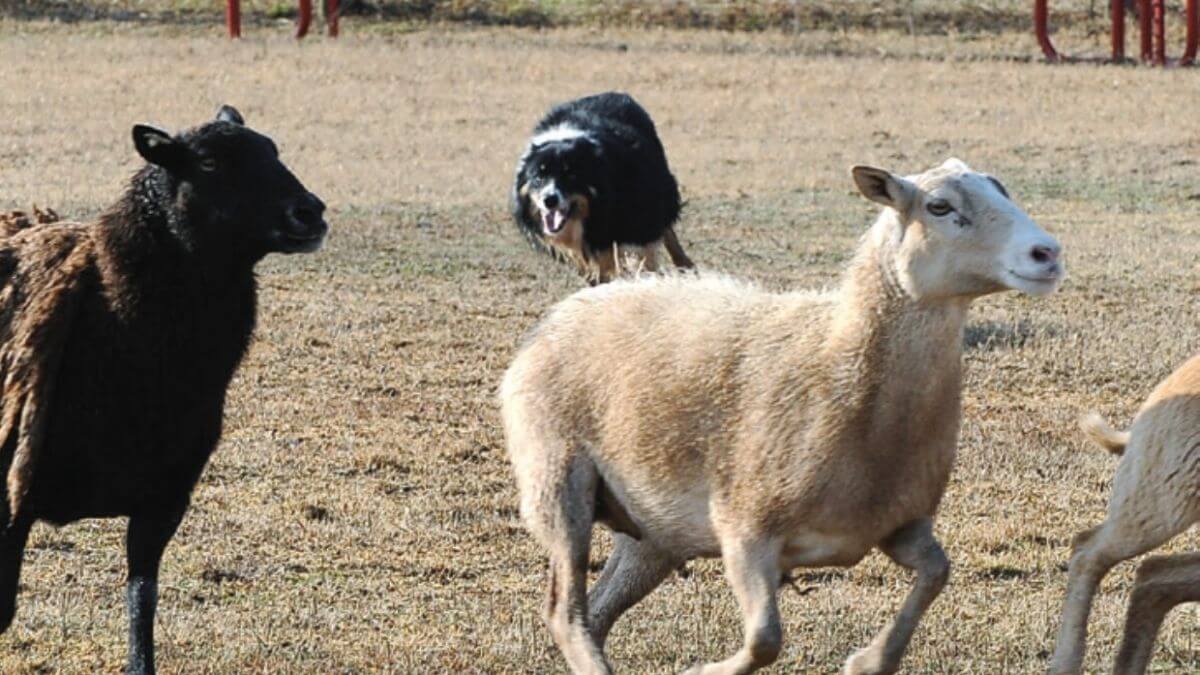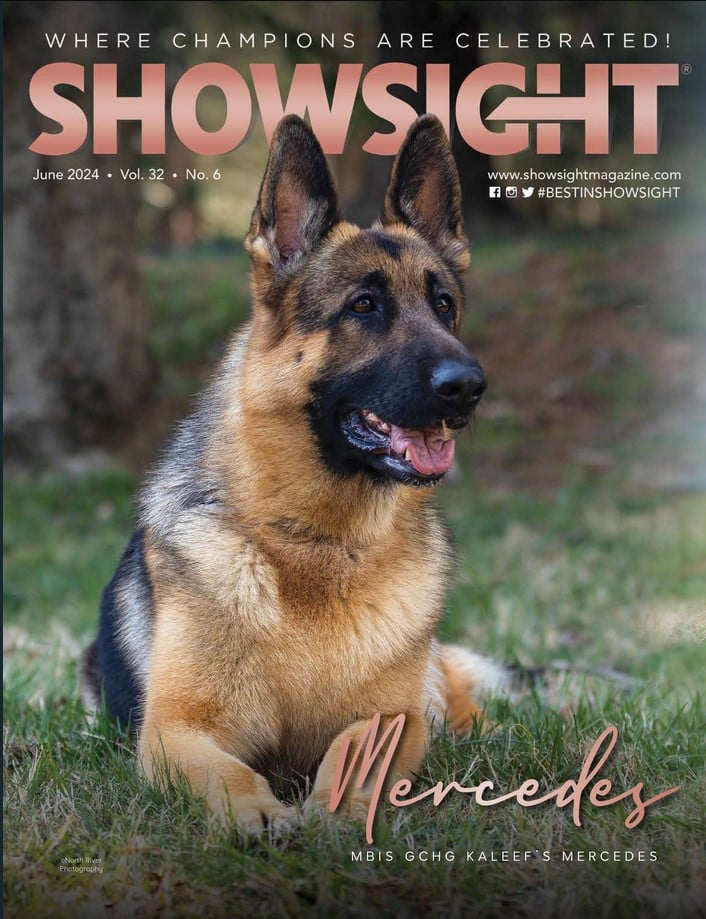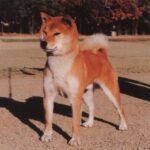This article was originally published in Showsight Magazine, April 2013 issue.
A Brief History of the Border Collie
Border Collies originated in the border area between Scotland and England. Often called the world’s premiere sheepherding dogs, Border Collies are renowned for their ability to move sheep in a silent and controlled manner, all at the will of their masters. Border Collies control stock by using their “eye,” which has been described as “the ability to control stock by staring at them in a fixed and steady manner.” Although their history is unrecorded, it is commonly accepted that they developed from crosses between the Roman drover dogs and the progenitors of the Finnish Spitz. As time went on, the dogs were also crossed with other working and sporting breeds, including beardies, setters, pointers and sight hounds.
Often called the world’s premiere sheepherding dogs, Border Collies are renowned for their ability to move sheep in a silent and controlled manner, all at the will of their masters.
Sporting breed records indicate that certain lines of pointers worked differently in the days when birds such as grouse and partridge were hunted on foot with nets rather than with guns. Like modern-day dogs, these particular lines were able to point to where a covey of birds was hiding in the underbrush. But instead of flushing the prey, the dogs would circle around the perimeter of the covey, indicating to the hunters exactly where to lay their net to capture the birds. It seems likely that Border Collies inherited not only their “eye”, but also the uncanny ability to know how far off the perimeter they need to stay in order to not disturb their “flock” from these early hunting dogs.
Border Collies have traditionally been bred solely for working ability. Because of the difference in terrain between the English lowlands and the Scottish highlands, farmers raised different breeds of sheep based upon their locality. The type of stock and the surrounding topography led to different physical attributes being required for the dogs to be efficient workers. For example, to survive in the rough hills and rocky crags of the highlands, sheep had to be light and fast. Thus, the good working dogs in the highlands tended to have longer legs and leaner bodies. In contrast, the lowlands could support slower, heavier sheep. To work these large, heavy sheep on gentler land, the dogs did not need as much speed and agility. Instead, they needed a lower center of gravity and enough size to be able to withstand a charge from big, angry ewes defending their lambs. Therefore, the dogs in the lowlands had shorter legs and heavier bodies. So, even though the dogs were bred for working ability (as opposed to being bred for “looks”), recognizable physical styles evolved.
The first sheepdog trial was held in Bala, Wales on October 9, 1873. Trials were designed to showcase the working ability of the dogs by having the dogs move sheep through a series of obstacles, penning the sheep and shedding one or more sheep away from the rest of the flock. The International Sheepdog Society (ISDS) was formed in 1906. The ISDS developed the first Border Collie stud books and still registers working Border Collies today. The ISDS hold annual competitions to determine National Champions in England, Wales, Scotland and Ireland. The National Champions then compete for the ultimate goal—the International Supreme Champion sheepdog. The first sheepdog trial to be held in America was in Philadelphia, PA in 1880. The first US National Championship sheepdog trial was in Staunton, Virginia in 1941. Today the United States Border Collie Handlers Association (USBCHA), the American Herding Breeds Association (AHBA), the Australian Shepherd Club of America (ASCA) and the American Kennel Club (AKC) hold herding trials all across America. The trials have various courses and formats and also have choices of sheep, cattle, ducks, geese or goats as stock.
Many trials, including the very first one in 1873, also had a “type” competition after the dogs ran the course. The “type” competition was, essentially, what we call today a dog show. The dogs were evaluated on physical structure to determine which was best suited to perform job of sheepherding. The farmers and shepherds who participated in the first trials and type competitions were, above all else, stockmen. (Women did not get involved in sheepdog trialing until much later.) As stockmen, they were comfortable with the idea of evaluating an animal’s physical structure against a standard based upon the animal’s purpose: whether that purpose was wool production, meat for marketing or working stock. Working collies were shown in the conformation ring in New Zealand as early as 1886 and Australia in 1907. They were shown in Europe at FCI shows before being recognized by the Kennel Club in Great Britain in 1976. Canada did not allow Border Collies in conformation until 2007.
Border Collies were in AKC’s Miscellaneous group for forty years—from 1955 to 1995. They could only enter obedience and tracking events. Border Collies weren’t very prevalent in AKC in the early years, but even in small numbers they made their presence well known in obedience trials. By 1990, Border Collies were becoming more popular as the sport of agility appeared and became more widespread throughout the US. Their popularity grew even further when AKC started offering agility trials in 1994.
Meanwhile, AKC’s herding program began in 1989. At that time, AKC only allowed breeds listed in the Herding Group to participate. Since Border Collies were listed in the Miscellaneous group, as herding trial popularity grew, full recognition became an issue. In December 1994, the AKC made its decision to fully recognize Border Collies. Registration would begin April 1, 1995, and the first Championship points would be awarded October 1, 1995. Since AKC recognition in 1995, popularity of the breed continues to grow—in 2012 Border Collies were number 44 on AKC’s most popular breeds list as determined by number of registrations.
In his book The Intelligence of Dogs, Stanley Coren announced that Border Collies are the most intelligent breed. Their trainability, willingness to work and athletic prowess make them an excellent choice for people interested in sports like obedience and agility. Their speed makes them desirable flyball competitors. Their grace and beauty appeal to those who want to show in conformation. And their unsurpassed abilities to read and control livestock make them outstanding herding trial competitors. Border Collies compete in just about any activity available and excel at most. Their desire to work hard and please their owner is directly related to how the breed developed. One cannot truly appreciate this breed without understanding that history.








